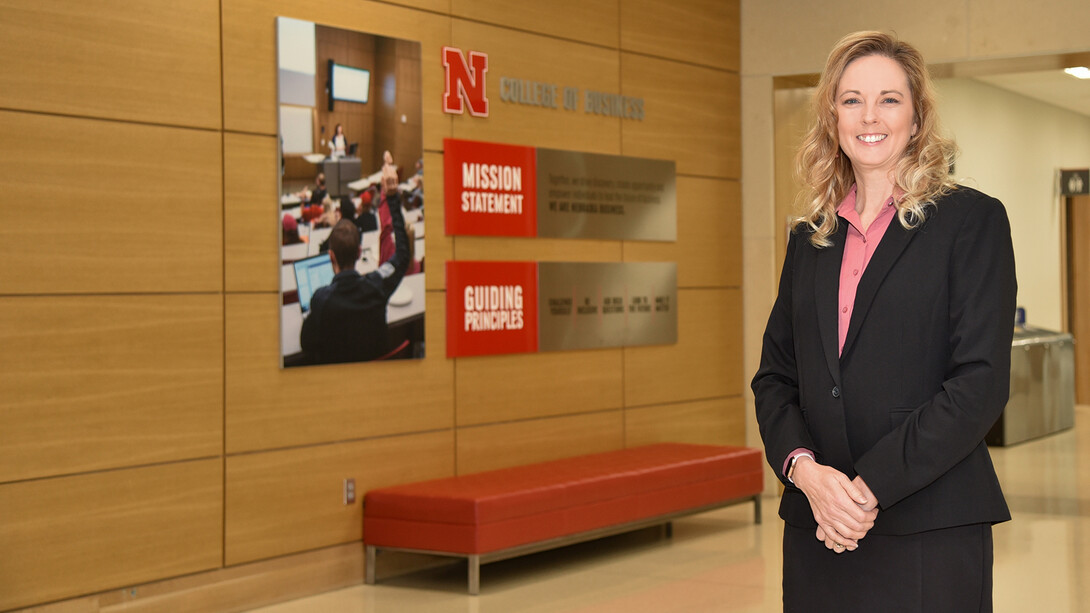
In the University of Nebraska–Lincoln’s dash to offer remote access teaching, learning and working in response to COVID-19, the College of Business turned to Tawnya Means to provide expertise on how to successfully manage a remote team.
Pulling from syllabi in her Leadership, Communication, and Teams in the Virtual World (Management 470) course and nearly 20 years specializing in online learning for higher education, the assistant dean and director of Nebraska Business’ Teaching and Learning Center created a presentation and hosted a webinar, making both available to colleagues.
“I wanted to do whatever I could to help people feel confident and have the resources that they needed to be successful,” Means said. “Leading teams online is something that I have knowledge of and experience doing and I wanted to share that with others in the college and the university.”
Offered every fall semester, the Management 470 course meets in person and online, allowing students a range of experiences, from learning Zoom to driving a telepresence robot. When the university announced a move to remote teaching on March 12, Means reached out and offered reassurance to students who have completed the coursework.
“I told them that this would be their time to shine as they already knew how do to most of it,” Means said. “It’s a great class, but suddenly it was real life and it was time to apply what they had learned.”
Means’ webinar, “Managing a Remote Team,” condenses lessons from the class into a crash course in key points taught in the management class. Topics include leading in an alternative work environment, outlining topics like the need to set ground rules, set communication expectations, staying connected, maintaining productivity, and supporting staff members in times of high-level personal disruption.
“Moving to remote work — even when planned for months in advance — can be difficult,” Means said. “We, as an institution, have made this transition in weeks. It’s been stressful and the key thing we all need to remember is to be patient with each other.
“Your team may not be perfect at first. But, it will get there in time.”
Alongside tips, the presentation outlines the potential strengths of remote working — including the likelihood of an increase in productivity and opportunity for improved engagement.
Key messages within Means’ presentation include:
Assume the best of team members — Give others the benefit of the doubt. Use predictable patterns in communication and shift tasks when possible, monitoring progress or mentoring as needed.
Create structure and standards — Have clearly defined roles, vision and goals. Learn how to use technology and take time to stay connected. Handle conflicts in smaller groups outside of main meetings. And, deliver praise for accomplishments and celebrate successes whenever possible.
Run an efficient virtual meeting — Set expectations, limit multi-tasking and offer an agenda. Encourage a few minutes for small talk before getting down to business. Summarize meetings and follow up as needed. Allow fluidity and flexibility as it allows.
Be there for each other — During this high-stress time, individuals may be struggling. Remind everyone that you are here for a common purpose and encourage frank discussions. Be deliberately empathetic and be willing to learn from each other.
University leaders can access Means’ “Managing a Remote Team” webinar and slide presentation online.







